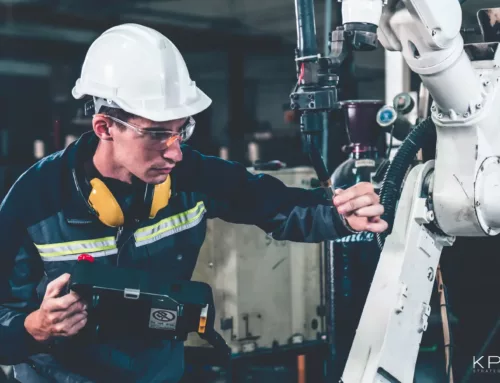Have you ever been stuck in a frustrating loop of preventable errors? Maybe a misaligned part, a forgotten step, or incorrect data entry derails an entire process. It’s a common struggle in every industry, highlighting a simple truth: to err is human. But what if we could design our work so that mistakes become impossible, or at least immediately obvious, long before they become costly defects? This is the brilliant simplicity and profound impact of Poka-Yoke – or, as the saying goes, “to err is human, to prevent it, Poka-Yoke.” This article is your guide if you’re a professional in manufacturing, a service industry leader, a process improvement enthusiast, or anyone dedicated to eliminating waste and boosting quality. We’ll explore what Poka-Yoke is, where it came from, how it works, and most importantly, how you can use its principles to create robust, error-proof systems that drive continuous improvement in your organization.
Main Takeaways From This Article:
What is Poka-Yoke? The Japanese Term for Mistake-Proofing
Poka-Yoke is a Japanese term directly translating to “mistake-proofing” or “error prevention,” and it’s a cornerstone concept in quality management. It involves designing processes and systems in such a way that human or process errors are either made impossible, or immediately obvious. By implementing Poka-Yoke mechanisms, organizations can proactively prevent defects from occurring, rather than relying on later inspections to catch mistakes. This “building-in” of quality ensures that deviations are stopped at the source, significantly reducing waste and improving overall reliability.
For example, cars are equipped with many “error-proofing” features to keep us safe on the road. Many cars will beep, or light up, if doors are open while the engine is running, or if someone is in the passenger seat and their seatbelt is not fastened. These are examples of warning functions, which alert users to potential errors.
Poka-Yoke’s Origin Story
The term Poka-Yoke was coined in Japan during the 1960s by Shigeo Shingo. Originally, the initial term was baka-yoke, meaning ‘fool-proofing’, but was later changed because of the term’s dishonorable and offensive connotation—respect for others being a foundational principle for Lean Six Sigma.
This concept was subsequently introduced as a crucial part of the Toyota Production System, specifically designed to eliminate defects in manufacturing at the source and prevent workers from assembling parts incorrectly, thus “building in” quality.
How Poka-Yoke Fits Into Lean Six Sigma
Poka-Yoke perfectly aligns with Lean principles by directly targeting and eliminating “waste” – particularly the waste of defects, rework, and over-processing that arises from errors. Simultaneously, it powerfully supports Six Sigma’s relentless focus on reducing variation and achieving near-perfect quality by preventing the very causes of defects. By “building quality in” at the source, rather than inspecting it in later, organizations leverage Poka-Yoke as a proactive component of their continuous improvement efforts, driving long-term operational excellence and consistently delivering value to customers.
3 Different Poka-Yoke Techniques
Poka-Yoke systems typically fall into three main categories, each addressing error detection and prevention in a distinct way:
1. The Contact Method
This technique relies on the physical characteristics of a product or process to detect errors. It uses shapes, dimensions, or other physical attributes to ensure that components are correctly aligned or processed. For example, a uniquely shaped connector that only fits into its corresponding slot one way prevents incorrect electrical connections.
2. The Fixed-Value (or Constant Number) Method
This method ensures that a specific number of items are present or that a certain number of operations have been completed. If the count is off, an error is signaled. A common example is a kit of parts for assembly that contains exactly the number of screws required; if any screws are left over or missing, it indicates a mistake in assembly.
3. The Motion-Step (or Sequence) Method
This technique focuses on ensuring that operations are performed in the correct sequence. It controls the order of steps in a process, preventing the next step from beginning until the previous one is correctly finished. For instance, a safety interlock on a machine that prevents it from starting until all guards are properly closed ensures a correct operational sequence and worker safety.
Benefits of Poka-Yoke Implementation in Business Operations
Poka-Yoke implementation significantly enhances business operations by directly tackling human errors, leading to substantial improvements in efficiency, quality, and cost-effectiveness. By designing processes that make errors impossible or immediately detectable, organizations reduce the need for costly rework, scrap, and extensive quality inspections. This proactive approach ensures that workflows are more consistent and reliable, minimizing disruptions and speeding up overall production or service delivery.
Furthermore, the reduction in defect-related costs, such as warranty claims, customer complaints, and returns, directly boosts the bottom line. Poka-Yoke fosters a culture of continuous improvement, empowering employees to identify and eliminate potential error sources, which in turn leads to higher product or service quality and increased customer satisfaction. Ultimately, Poka-Yoke transforms operations from reactive problem-solving to proactive error prevention, building robustness and excellence into every step.
Poka-Yoke Focuses on Six Principles
These six principles form the foundational framework for effective mistake-proofing, guiding the design and implementation of Poka-Yoke solutions across any process.
1. Eliminate the Possibility of Errors
The most effective Poka-Yoke solutions completely remove the chance of mistakes entirely. This is achieved by fundamentally redesigning products, equipment, or workflows so that the error simply cannot occur. For example, a component might be designed with an asymmetrical shape, making it physically impossible to assemble it incorrectly.
2. Prevent Human Errors from Reaching the Next Stage
Processes should include built-in controls to stop errors from progressing down the production line or service process. These controls act as immediate barriers, ensuring that a faulty item or an incorrect action cannot move forward. An assembly line might automatically halt if a sensor detects a missing part, preventing a defective product from continuing.
3. Replace Manual Processes with Automated or Foolproof Systems
Replacing human-dependent tasks with automated or highly guided systems significantly reduces mistakes and ensures consistency. Automation removes the variability inherent in manual operations, while foolproof systems provide clear, undeniable pathways for correct execution. For instance, using a barcode scanner to verify the correct part before assembly eliminates manual selection errors.
4. Facilitate Correct Actions with Clear Guidance
Systems can be designed so that the correct action is inherently easier, more intuitive, or more obvious than the incorrect one. This principle guides users towards the right path without explicit instructions or complex checks. Color-coding wires or components, where each color corresponds to a specific connection point, makes correct wiring almost effortless.
5. Detect Errors Immediately
Real-time alerts, sensors, and warning mechanisms are crucial for helping users identify and correct mistakes as soon as they happen, before they cause further issues. This immediate feedback loop is vital for preventing minor errors from escalating into major defects. An audible alarm sounding when a machine is overloaded allows the operator to intervene instantly.
6. Mitigate the Impact of Errors When They Do Occur
While the goal is prevention, some errors are unavoidable. For these instances, businesses should have fail-safe mechanisms in place to minimize their consequences. This means designing systems to fail safely or to contain the error’s impact. For example, a circuit breaker that trips when an electrical surge occurs protects equipment from severe damage, even if the surge itself couldn’t be prevented.
Examples of Poka Yoke in Manufacturing
- Magnets in a grain packaging plant detect and remove metal pieces before they are packed.
- Interlock switches which detect the position of a machine guard and switch off the machine when the guard is lifted. The machine will never operate when the guard has been lifted and this prevents accidents to the operator.
- Light curtains in a factory detect when someone is near very dangerous machines and switches off the machine to prevent injuries.
- Safety mats near machine areas that pose a danger automatically trigger stoppage when someone steps on them. This prevents injury to personnel (such are technicians) who are trying to access dangerous sections of a machine.
- Power guards on high inertia machines with moving parts prevent opening until the parts have stopped completely in order to prevent accidents.
- Machines that must be controlled using both hands ensure that some distance is kept between the operator and dangerous machine parts.
- In the food industry, gloves and other small pieces of personal protective equipment must be blue in color for ease of detection in case they fall into food. This is because blue foods are rare in nature, and the color difference makes it easy to detect that a foreign object has fallen into the food.
- Using standardized containers at the workstation enables workers to know exact quantities without having to weigh or count the contents.
- Use of color-coded date labels to mark the production dates of products. This way the different batches are easily identifiable for the purpose of product rotation. The system is especially useful in the food industry where rotation of batches is very important because of hygiene considerations.
How to Implement Poka-Yoke in Your Organization
The Poka-Yoke technique could be used whenever a mistake could occur or something could be done wrong – meaning everywhere. It can be successfully applied to any type of process in manufacturing or services industry, preventing all kinds of errors.
Poka-Yoke is easy to implement because of its universal and rational nature. You can follow this step-by-step process to apply it:
- Identify the operation or process.
- Analyze the 5-whys and the ways a process can fail.
- Choose the right Poka-Yoke approach, such as using a shutout type (preventing an error from being made), or an attention type (highlighting that an error has been made).
- Take a comprehensive approach instead of thinking of Poka-Yokes just as limit switches, or automatic shutoff.
- Determine whether a contact (use of shape, size, or other physical attributes for detection), constant number (error triggered if a certain number of actions are not made), or a sequencing method (use of a checklist to ensure completing all process steps) is most appropriate.
- Test the method and see if it works.
- Train the operator, review performance, and measure success.
Sustaining Poka-Yoke with KPI Fire for Continuous Improvement
The strategic implementation of Poka-Yoke techniques delivers tangible and transformative business benefits within a Lean Six Sigma framework. By embedding error-proofing mechanisms directly into workflows, organizations experience a significant reduction in costly defects, leading to less scrap, minimal rework, and fewer customer complaints. This proactive approach drastically improves operational efficiency by preventing disruptions, streamlining processes, and ensuring consistent output quality. The direct result is a healthier bottom line, stemming from reduced waste, lower warranty expenses, and enhanced resource utilization, moving the business from reactive problem-solving to predictable, high-quality delivery.
Sustaining these gains and fostering a culture of continuous improvement, particularly for Poka-Yoke strategies, requires robust management and tracking. This is precisely where tools like KPI Fire become invaluable. KPI Fire provides a structured platform to manage improvement initiatives, enabling teams to define and track key performance indicators (KPIs) related to error reduction and quality. Its features allow for real-time tracking of Poka-Yoke implementation progress, performance monitoring against established benchmarks, and transparent communication across the organization. This ensures that mistake-proofing efforts are not one-off events but are continuously nurtured, measured, and refined for long-term operational excellence.
Are you ready to see how Poka-Yoke, empowered by intelligent management, can revolutionize your operations? Request a demo today to discover how KPI Fire can help you implement and sustain effective mistake-proofing strategies, driving continuous improvement and delivering measurable results for your business.




